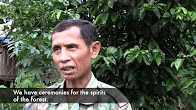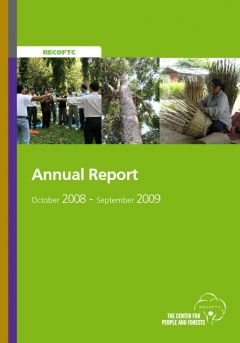Rights to forests and carbon under REDD+ initiatives in Latin America
Rights to large areas of forest have been granted to communities and indigenous peoples in Latin America, offering these groups an opportunity to participate in REDD+ initiatives. However, tenure is not always secure, and security of tenure alone is insufficient to guarantee positive outcomes for both forests and livelihoods. The question of carbon tenure rights has only just begun to be addressed, and even less attention has been given to liabilities. REDD+ initiatives provide an opportunity to consolidate indigenous territories but present a risk to those without secure land rights.
The state of REDD negotiations: consensus points, options for moving forward and research needs to support the process
The United Nations Collaborative Programme on Reducing Emissions from Deforestation and Forest Degradation in Developing Countries (UN-REDD) commissioned this report from the Center for International Forestry Research (CIFOR) to summarize the current state of negotiations towards a decision in Copenhagen, specifically outlining areas of consensus, options for resolving areas where consensus has not yet been reached, and priorities for research to support successful implementation of an international REDD Programme following a decision at the 15th Conference of the Parties (COP) in Copenhage
Community forestry development research in South East Asia : findings of a synthesis study of IDRC supported projects in Cambodia, NE India, Indonesia, Nepal, Philippines and Vietnam
Ten IDRC-supported community forestry projects in six countries were selected for this synthesis study. A sizable part of the rural population in these countries are designated as ‘encroachers’ or ‘trespassers’ in the ‘forest.’ Many of these forest users claim long standing customary rights to the area, some of which are formally recognized in state law, but seldom in practice.
Report of the Twenty-sixth Session of the Latin American and Caribbean Forestry Commission
Meeting symbol/code: FO: LACFC/2010/REP
Session: Sess. 26
Informe de la vigésima sexta reunión de la Comisión Forestal para America Latina y el Caribe
Meeting symbol/code: FO: LACFC/2010/REP
Session: Sess. 26
Why some community forests are performing better than others: a case of forest user groups in Nepal
Management of many Nepalese forests has been devolved to local communities. Forest products, which are used by the community and which may also be traded, are essential contributors to community well-being. Forests are also important contributors of ecosystem services, such as flood protection and wildlife habitat. Nepalese communities were surveyed to measure flows of forest products from their community forests. A stochastic frontier analysis shows that communities are not producing forest products efficiently and there is potential for improvement.
Village Voice of Mon, Southern Laos
Mon describes their traditional ceremonies for the forest.
Village Voices of Amphan, Southern Laos
Amphan describes how everything comes from the forest.
Forest governance and implementation of REDD+ in India
This report indicates that the Forest governance is identified as critical to the success of REDD+.
Implementation of robust REDD+ strategy is possible through Community Based Forest Governance.
Report talks on Reducing Emissions from Deforestation and Degradation (REDD+) which is a global mechanism that aims at sustainable forest management (SFM) through protecting forests and enhancing carbon sequestration.
Report briefly describes The Scheduled Tribes and Other Traditional Forest Dwellers (Recognition of Forest Rights) Act, 2006
RECOFTC Annual Report 2008-2009
For RECOFTC, the highlight of the past year has been the launch of its Third Strategic Plan, which covers the five years from 2008 to 2013. The plan has the title ‘People and Forests in a Time of Change: Strengthening Capacities for Community Forestry to Respond.’ This report looks at the progress the organization made for the 2007-2008 fiscal year.
Small forests, big ambitions and a hard reality - Community Forestry in Nepal
Community forestry in Nepal is intended to reduce poverty by sustainable management of forests. Timber is one of the most high-value forest products, especially in the case of Sal (Shorea robusta) forests in the Terai region of Nepal. Despite having several advantages, including high value forests on fertile land, connection with transportation networks, and being close to regional markets, community forests in the Terai region produce little or no timber from their Sal forests. This research looks at what is affecting the production of Sal timber from community forests.






